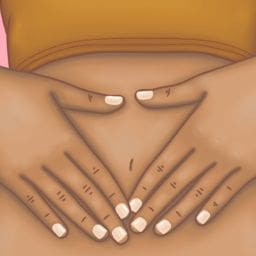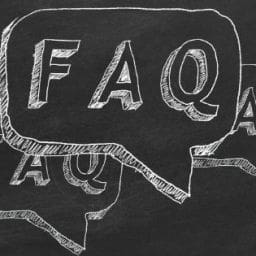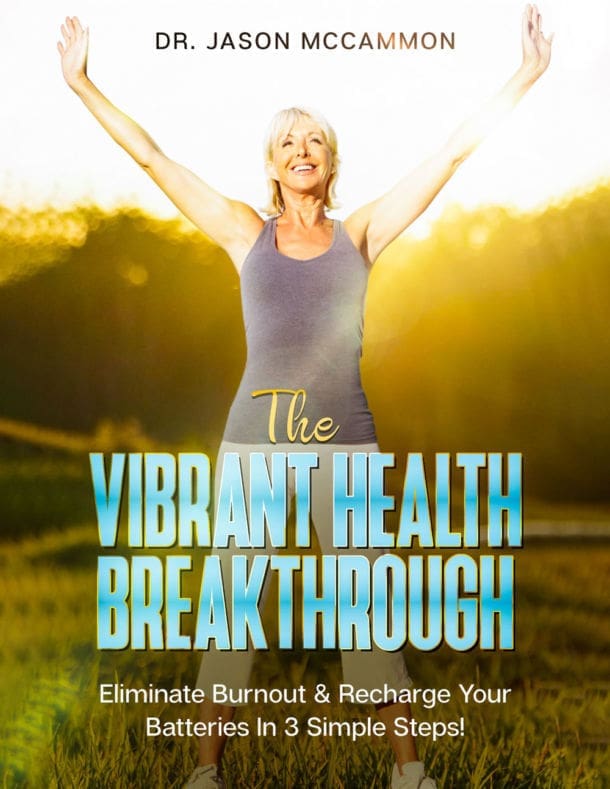
A holistic medicine approach to uncovering solutions to chronic pain. Advice from a naturopathic doctor.
This article about chronic pain explores why it’s such an epidemic and what can be done about it. The naturopathic approach (also known as the holistic medicine approach) is to look at the body as a group of systems which all must work together, like an orchestra, to create well being or a good state of health. This approach identifies imbalance as the root cause, digging past merely chasing pain or treating symptoms. One of the biggest things that we’re going to talk about is the conventional medical answer to chronic pain and why there’s a place for it, but why it really ultimately fails to help relieve the true underlying causes. If we never get to the root cause of chronic pain, how can we solve it? Let’s chat about it.
First, let’s get into some of the side effects of chronic pain and some of the things that it can cause.
Depression.
Whenever you have pain in the body, you get what’s called nociception. These are when the nerves send signals to our brain that we’re not okay, and that really messes with our brain centers that help us with mood and just tells us everything’s okay. When you have pain, our brain tells us we’re not okay. Thus, pain is a big contributing factor to depression.
Weight gain.
Why weight gain? Well, because you’re not as active and doing things, you’re more cautious to do things, you don’t move as much, so you are more likely to gain weight. This extra weight usually puts more stress on the body both in terms of actual pressure but also elevated inflammation, making pain worse. Couple weight gain and depression and you are more likely to eat more comfort foods.
Sleep.
Loss of sleep is big. Sleep is such a huge tenant of health. You have to be able to sleep well to have good health. If you’re tossing and turning, or if you have just so much pain you can’t even get comfortable at night, it’s going to be hard to be healthy when you have loss of sleep.
Reduced wages.
People don’t realize this, but chronic pain can cost you a lot over the long term with your career. Because, again, not being able to focus as much because of your pain, medical appointments, maybe things like drugs or other lifestyle factors with managing the pain. These cause you to not be able to put the type of quality into your work that you’d like to. Maybe it’s hard to show up with an amazing attitude which can affect the odds of getting a promotion. Not to mention time off work.
Conventional approach vs. holistic approach.
Now, our conventional medical system does a really good job when it comes to acute pain. If you just hurt an ankle or a knee, maybe a son or daughter, a spouse in a car accident or something traumatic, it’s really incredible the amount of skill and training conventional providers have in the emergency department. They’re really good to take care of that upfront with the drugs, procedures, the surgeries with the hardware they put in.
The problem is with chronic pain, and that’s what most people deal with, is it becomes non-acute pain. Conventional providers have little more than the same tools that are used for acute pain. These do not work well from chronic pain in terms of a resolution. That’s where they don’t have as much training in my opinion. And I’ve seen a lot of times some poor outcomes there.
Treatment vs. a plan.
Medicine also often refers to “treatment.” They keep saying that word treatment. When we look at treatment, what does that really mean? It really means you have an injured knee and we’re going to treat the knee. We’re going to treat it as if it’s the only issue that has contributed to the problem. But, if we just look at the knee as an isolated joint, there’s only so much we can do. If the knee has a true clinical pathology such as a torn meniscus or an ACL, yes, you probably should get that looked at by a conventional provider and you may need direct treatment. And if it requires surgery, so be it. But very often when it comes to chronic knee pain – for example – the knee is what I call the canary in the mine. It tells the brain it’s hurting but it is often due to many other factors. The knee is reacting to what’s going on at the foot, ankle, and at the hip level. And if you’re not addressing those other issues, then the knee is going to suffer. It’s more of a reactionary joint. In other words, misalignment, tightness, and weakness in other joints impact the areas like the knee which is more prone to injury.
Many of our chronic pain ends up affecting what’s called our unstable joints. These are joints that are prone to being more unstable than other stable joints. In fact, stable joints “feed” excess energy to unstable joints when the system is not balanced. I’ll speak to this a bit later but I have found and the research has proven that a holistic, joint by joint, approach is more effective than just treating the site of pain. What I refer to as chasing pain. You will get a better long term outcome when you chase solutions instead of just pain.
But this is just one example for you where you can’t just stare at the knee joint and say, “Hey, this thing hurts. Fix me, doc.” There’s more to it than that, especially when it comes to chronic pain.
Other factors.
We’ve got nociception which sends those signals back to the brain that something is wrong. The longer you’re in pain, the more those signals from the brain, again, in this case down to the knee, it constantly sends those to. And the more likely it is to keep sending them, the more you have that pain nagging you. Think of it like a learned behavior or habit. The longer you have been doing a given behavior, the more likely you are to continue it without thinking about it. Pain is the same way. We have to desensitize the area and get it out of that loop.
Inflammation is big as well. We think of inflammation as like, “Man, I hate inflammation because it causes pain.” Well, actually, inflammation is a good thing. It’s our body’s saying, “Something is wrong. We need to attend to it.” So, at first, it’s helpful, but long-term inflammation really wears us down, it can cause atrophy of the muscles and cause a lot of problems long term.
Root cause.
Now, if you’ve tried physical therapy, injections, procedures, and trial and error with different doctors and this and that, one reason that it’s probably not going well is because you might not be working with a clinician who is addressing the root cause(s) and looking at your body globally. Again, just like the knee, let’s assess every body part and help the entire body work better. In turn, that’s going to help that region work better. That’s what we’re missing a lot of times in this chronic pain type situation.
Let’s talk about chiropractic and osteopathic care. I’m a big fan of those practitioners. I’ve referred to good chiropractors. I know good osteopaths; I’ve had some great training by some osteopaths. I think it’s great medicine. The issue I have with both concepts, in general, is that it’s very good at treating subluxation, which is when a joint is out of balance which does cause inflammation to pain. It’s great at that. For my nearly 20 year career, I’ve watched these systems generally lack two major things: they are often not globally looking at all the factors involved in the issue and there is often no rehabilitative program personalized to the patient.
I just haven’t seen them really thoroughly assess your knee, back, breathing pattern or even stress responses. Then, after the assessment, let’s look at a program to address these other global factors holistically and see what we can do to reduce the force that ends up at that knee joint. Again, I keep beating on the knee, but I just want to give you an example where if we can look at these other things that we know contribute to the knee issues, you’ll have less forces being sent to the knee, therefore, the knee needs less stability, it can start to heal, it has less friction, for example.
I still refer to chiropractic care for really significant spinal issues for sure. Osteopaths, if somebody’s dealing with some really big acute pain, especially from a car accident, once we’re out of the woods as far as like the emergency department, definitely see an osteopath for a little while when you’re dealing with things where you can barely move or a physical therapists. On the front end they can really help. Long term, though, are we really looking at the entire picture in helping you heal in all these areas? We’re going to expand upon that more and help you understand why a holistic approach is going to be more successful long term. Although it may take longer, it’s more permanent.
Acupuncture.
There are lots of studies showing it’s very helpful for chronic pain, because why? It helps energy flow through our body. It’s energy at the Nano level, quantum energy. But nonetheless, we need energy flow in the body. And so that can be very successful. But again, is it long term actually fixing the movement flaws that we have? No, but it can help, and it’s also a non-invasive method.
Medications.
Medications are often needed to take the edge of the pain, just to get through the day. We know pain causes many mental health issues, so there is definitely a place for it. That said, we need to be careful. We all know about the opiate epidemic. Such a huge portion of that is caused by chronic pain. So, I would definitely encourage you to try to minimize those or look for alternatives even if you had to just replace it with a THC product. I’m not saying that’s the best answer for everything, but it certainly can help a lot and it’s a lot safer than an opioid.
NSAIDs.
NSAIDs, non-steroidal anti-inflammatory drugs, things like an ibuprofen, naproxen, Celebrex, they have their place, they can be very helpful, but they can do a lot of damage to kidneys and liver over the long haul. And they also can destroy your gut lining where it leads to, guess what? More inflammation, and guess what? More pain. So, we have to be careful with those.
Finding solutions.
So, let’s talk a little bit about what we can do about that. First of all, I want to make sure we delineate chronic pain. What I’m talking about today is more muscle and joint chronic pain. Other types of chronic pain which I am not addressing here are conditions like neuropathy, for example. This is where the nerves get damaged from high blood sugar, as one cause. There are also migraine and autoimmune conditions which can cause chronic pain. And I’m not saying the approaches I’m going to go over in a minute may not help those, they could. But we’re talking about muscle and joint-related pain in this particular video.
The first thing you can do is look at low inflammatory foods. Now, everybody’s so unique, but we have to start somewhere and unless you want to work with a clinician, I would recommend something like the Mediterranean “diet.” I refer to diet as a nutrition pattern, not a medical or weight loss diet. Anyway, of course, you have to pay attention to food sensitivities and gut health and all that. It’s really important. But if we can put it into a nutshell, the Mediterranean diet has been shown to have a reduced inflammatory load on the body.
I’d reduce your omega-6’s too. This isn’t talked about a lot. You have this omega-6 to 3 ratio, and science has shown when it’s tilted higher toward omega-3, like more of a four to one, so that means four parts of omega-6 to one part omega-3, we’re going to get less inflammation in the body. It totally changes the inflammatory chemicals our body makes. It changes how the brain perceives pain. That’s big. It changes literally what genes we express, because it changes your epigenome on top of those genes. And the higher omega-6 sources, for example, all your like soybean oils and your margarines and things like that, a lot of animal fats, they’re going to raise inflammation. Not necessarily all those foods are bad, but they do change the inflammatory ratio in your body.
H20.
Another thing we can do is stay hydrated. Distilled water helps carry minerals into the cell far better than other types of water and it helps remove waste from the cell too.
Supplements.
Turmeric, I just listened to a podcast by this elite expert on inflammation, and turmeric is just unbelievable. And I knew that, but I like to reinforce that the research backs it up. It’s really big. Just make sure you have a little black pepper in there as an extract or you can add it like if you’re going to put turmeric in a shake or smoothie or something or a recipe.
Ginger is a big anti-inflammatory. Cayenne can be helpful as well. And we talked about omega-3 fatty acids already like fish oil.
Really important, by the way, your fish oil should be triglyceride form or phospholipid, not ethyl ester. Most are ethyl ester. Ethyl esters may just add more inflammation to the body.
Movement.
Let’s talk about movement. Chronic pain, it can be tough, because you think, “Man, should I do this? Should I not do this? I’m afraid to get injured.” You don’t want more pain, I get it. But it’s actually always better to start with a little bit of movement and just assess it from there. Use pain as your guide. But introducing a little bit of friction to especially a muscle belly can be helpful. If we take the knee joint again and visualize it as a joint that hangs between the hip and ankle. We want to work on the musculature in between the painful joint (in this case the knee) to help desensitize that joint and also create “slack” or create less of a tug on that knee. This means we can work on the upper and lower legs muscles.
SMR or self-myofascial release is a great way to get some friction in there. More often than not in chronic pain conditions, our muscle bellies surrounding (above and below) the affected joint are not moving well. Our muscles and fascia must glide past each other nearly friction free. When they get stuck (adhered) they cannot lengthen, which means this shortened muscle system tugs on the joints nearby. This tugging causes misalignment of the entire joint system which causes undue friction at joints of instability. If you have an arthritic lower back, for example, the level of mobility of the tissues around the thoracic spine and hips make a huge difference on how your lower back performs. So, just treating your low back pain directly at the site of pain usually does not resolve the issue since the entire system is out of whack.
Tools.
I’m a huge fan of a massage gun to assist us. Start with low intensity and get a little movement in there and just get some blood flow going. We are talking about working on the quads, hams, calves, any muscles in our upper and lower legs when we are talking about the knee. With the lower back, get into the hip tissues and loosen up the thoracic paraspinals which are the muscles next to your spine throughout your middle back. Take it easy at first; low setting.
Foam rolling can be very helpful, although, I found you have to be able to typically get a lot of pressure on it. So, getting on the ground or on the floor might not be realistic. But if you can, if you’re able to get on the floor and get into these muscles it can really help.
A massage stick; they have handles that look like handlebars here. There are massage sticks that have little beads in the middle. That can be helpful as well. They also have things like tiger tails.
Lacrosse balls are helpful or pretty much any round object. I especially like the little therapy balls that have the little spikes all around it, those are really cool. I’ve even been known to grab dog chew toys, honestly! So, I’ll just grab whatever, as long as I can get some pressure in there.
The idea is to move the tissues around. And what we’re looking for is a lot of our tissues in chronic pain are glued together called myofascial adhesions, and they’re just locked together. What that means is if that muscle belly won’t glide, the ends of that muscle system, which is, again, there’s the joint, that’s where we feel a lot of pain. But we have to actually unlock the middle of that muscle to allow what’s called sliding surfaces.
Sliding surfaces.
Imagine you were making a bed. You have a couple layers of sheets on the bed. And when there’s nothing on top of them, they can glide over each other just fine as you move the covers around. But if we put an object, let’s say we have someone sit on the bed as we try to move the sheets, there is now crazy friction and they can’t move very well. The sheets are stuck in place just like our muscles get stuck. So, we have ways we can unlock that, and we start with these self-massage tools. Even if you just did some SMR for the next couple months, 3x a week, and then did a gentle walk, staying within your comfort zone, you would notice improvement. This is without any complicated stretching or a massive time commitment. Just start with 2 minutes per body part and go from there.
Compression.
Adding compression by sore and painful joints can help. Compression can help push lymphatic fluids out of the injured tissues, helping the body turn over the damaged cells and create new ones. Using compression wraps, joint sleeves, or compression socks. Ace bandages can be good. I would use firm and moderate pressure but not so much that it restricts blood flow or in even tension as this can throw off joint alignment. This would be suggested for wearing throughout the day.
You can also use moderate to high compression for short periods of time on muscles but unless you are otherwise directed, not on the joints. Use an elastic bandage, starting distally (away from the heart) and wrapping toward the heart. Another great tool for this is a Voodoo wrap. Then you flex and extend the joint slowly. Use a full range of motion if you can but even partial is good. Tight compression wrapping does what the SMR we chatted about above does but it does so globally which means the entire region gets the releasing or loosening effect. For example, if we are dealing with the knee again, wrapping the upper thigh, then flexing and extending the knee slowly while seated, can really do wonders for knee pain and function. Remember to only keep high compression wrapping on for 3 to 5 minutes and stop if you have any numbness or tingling but note that it should be slightly uncomfortable.
Solve for the Imbalances.
You also have what’s called phasic versus hypertonic muscles. Phasic means muscles that are completely shut down, do almost nothing when they should turn on. Hypertonic muscles means they’re overactive. So, what happens is if you imagine a tug of war and we have a big strong person at one end and a weak person at the other, you’re always going to get tugged in one direction. Or, the teeter totter, remember that? We have a fulcrum here and then the metal bar up top and two seats on either end, and then the thing moves to whichever has more force. Same thing applies to our joints.
The joints have to have equal forces going through them, plus and minus, or is it going to get injured or at least raise risk of injury. So, let’s talk about that, phasic muscles versus the hypertonic.
If we go joint by joint approach, again, this is general, everybody’s different, but it’s what I found in my practice to really unlock the body. I’ve seen tremendous outcomes, like crazy outcomes. I’ve seen people that can’t even get out of their car win their golf league after a few months after working with me and applying these principles at home.
Generally speaking, I will give you some insight here, you really want to mobilize the following joints:
Ankle, which means we need more dorsiflexion for the knee to travel over the toe.
The hips, especially hip flexors. We sit a lot in our culture, so our hips are always at 90 degrees, right? If we’re always at 90, and we go to stand up, they want to stay stuck as the brain still thinks they need to be shortened to maintain that 90 degree angle. Our brain thinks our hip flexors are still in a seated position. Let’s mobilize (lengthen) those hip flexors.
The T spine. Your upper spine is your C or cervical spine. Your lower spine is your L or lumbar spine. The T spine is the middle section. For most folks who suffer chronic spinal pain, it’s usually upper or lower. But the research shows when we mobilize our T spine (the section that is usually pain free or has less pain) our upper and lower spine benefit, sometimes to a great extent. Often we’re hunched over a device like a phone, computer, or slouching when we drive. We’re hunched forward a lot in our culture. We’ve got to get that T spine unlocked. Remember earlier with the unstable and stable joint discussion? Well, your upper spine (neck) and lower spine (low back) are often hypermobile. These are joints of instability. The T spine or middle back tends to stiffen up and lack mobility, so it’s a joint of stability. When we strengthen unstable joints and loosen the stable joints we get balance. This reduces chronic pain long term.
Example of reciprocal inhibition (muscle shut down).
Let’s take a very common example of chronically phase or shut down muscle. The glutes. Because we tend to sit so much our hip flexors get short and tight, often overactive, which in turn, shuts down the glute firing patterns in the brain. It’s called reciprocal inhibition. Since hip flexors and glutes have opposite actions in the body, they oppose each other. If we tell the brain to keep the hip flexors on all day to sit up right to work and drive, it must keep the glutes off. We’ve solved hundreds of cases of back and knee pain by simply balancing this hypertonic-phasic balance throughout the body.
The deep core, a lot of us focus on the anterior core which is the front of our abs, the six-pack, and we want to see more muscle definition. That’s great and all, but our core wraps all the way around your entire torso and it’s underneath the mirror muscles of the abs. We have to work on our deep core. One of the best ways to do that is to take a deep breath and just blow the air out slowly. And as you do that, think about cinching in at your waist and pulling your belly button in and keeping that tension throughout the day.
Now, if you start working on these things with the soft tissue movements we talked about earlier, with the foam rolling and massage gun and you’re going at it gently and you’re really not seeing a lot happen and your body is not improving, definitely seek out professional advice. But I’d like you to try some of these tools and see if you can make a little headway.
Story time.
So, let’s talk about a couple of stories that will help illustrate how powerful this holistic approach is if we really look at the body as a whole. I had a client who could not lift his arm above his shoulder, pretty much in that frozen shoulder group. He played quarterback all the way through college for years and then many years more as he threw the ball around to his son. So, we have 20 some years of that throwing motion, tens of thousands of times. He went to several doctors who found nothing they could do surgery on, so he was referred to physical therapy. He was faithful with his PT for 3 months but saw no improvement. He was bummed as he was missing time with some of his kids. He wanted to continue to play backyard football and just hang out with kids and have fun but his shoulder was killing him.
When I assessed him, I found out that he actually had a lot of great musculature. So, he was being treated by the PT clinic as if he was weak. All the muscle bellies were very robust and strong. You know what it was? There were a couple of structures that were missed by the PT. I fixed a lot of shoulders over the years. I’ve come to call these the breaks of the shoulder. In other words in his throwing motion, he had some muscles that were overused which were the ones that created the power in the throw. Muscles like the teres major and subscapularis. They are very strong… too strong. The opposing muscles could not overcome these tight structures. These throwing muscles were acting as “brakes” just like the brakes on your car. It was like having your foot mashed onto the brake pedal while also pushing down and the gas pedal. Sure the car might eventually move a little but it won’t be long until something fails. This is not just what happened with this frozen shoulder example, but this is exactly what I see if the vast majority of chronic muscular or joint pain clients. We had to unlock those. It did require manual therapy with some at home follow up. But he got almost a full 180 degree of shoulder flexion.
Another client came to me and he could not bend down and with his hands below about the knee level. He would get excruciating pain and oftentimes vomit. Imagine not knowing if you could bend down or not to pick something up or tie your shoes. It just completely controlled his whole life. He had opted for surgery, which failed, it did almost nothing. He had a lot of medications he was taking and injections and all failed. After an assessment, I found that he had major adhesions which were trapping the nerves between the muscle bellies. We unlocked those with a variety of the tools we discussed above. I gave him homework to keep those moving. Once we unlocked those, it was like a whole different person. And I retested him on the same tests as when he came in, and he got about three to four times improvement in range of motion from unlocking these muscle bellies. I’m assuming it was a permanent fix as I haven’t heard from him in many years.
I’m not knocking the conventional approach completely. There’s a place for surgery, there’s a place for injections. I’m just saying this doesn’t work for most chronic pain sufferers like you as it’s not a long term solution. But what if we take a non-invasive approach, soft tissue approach and neurological approach first, and consider that before going into those other options, which are always available to you?
The wrap up.
All right, so hopefully this helped you out. I know it’s a huge topic, we could talk about it for hours and there’s so many individual things that you probably wanted addressed, but I just wanted to at least give you some insight into chronic pain and what we can do about it.
I’ve written a really great e-book you can check out on my website called The Vibrant Health Breakthrough. Sign up for that here on my website to start down a new path to better health today.
Take care and Be Well!
~Dr Jason
















